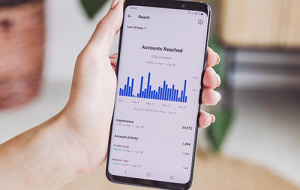Anxiety and depersonalisation
 Academic Opportunity Fund Report – Katie Lofthouse, Experimental Psychology
Academic Opportunity Fund Report – Katie Lofthouse, Experimental Psychology
I was provided with £100 from the Academic Opportunity Fund to be spent on social media adverts for my third year Research Project.
My Research Project is exploring the relationship between anxiety and depersonalisation in adolescents. Depersonalisation is a form of dissociation often described as feeling a disconnect from one’s thoughts, feelings, and sensations. It is a symptom commonly experienced by adolescents with anxiety disorders. Research has shown that people who experience depersonalisation find it to be distressing, as well as evidence showing that in adults, it is a risk factor for elevated symptoms of depression and anxiety.
However, depersonalisation has received little research in adolescents, and the relationship between anxiety and depersonalisation has not yet been explored. Currently, there are no NICE (National Institute for Health and Care Excellence) guidelines for the treatment of depersonalisation by professional psychologists, demonstrating a lack of awareness of this symptom in the field. Greater understanding of the link between anxiety and depersonalisation, and exploration of potential factors which mediate the relationship, could accommodate improvement of clinical interventions for young people who present with symptoms of anxiety and/or depersonalisation.
Therefore, to address this gap in the field, my supervisors and I designed a study which would allow us to explore the link between anxiety and depersonalisation. This involves a 20-minute online survey to be completed by participants aged 13-18 years-old which comprises a range of clinical questionnaires to assess trait anxiety, depersonalisation, and a range of potential mediating factors.
After conducting a power analysis, I established that we would require 145 participants in order for our study to be adequately powered, accommodating greater confidence in the results and increasing the likelihood of the results being accepted for publication in a journal. However, having conducted initial recruitment of participants through schools, we only reached around 70 participants, with schools reluctant to participate due to strains caused by the COVID-19 pandemic.
As a result, I applied for the Academic Opportunity Fund in order to cover expenses of adverts to run on social media promoting the survey. I designed two social media adverts – one targeted at parents of our target age range and the other targeted at people aged 13-18 (see Figures 1 and 2). My supervisors and I decided to run these ads over a short period of 4 days, as this strategy meant the ad would reach more people in a shorter time frame. Having also received additional money from the Department of Experimental Psychology, we allocated £150 to this ad campaign.
The social media ads were very successful; after running them for 4 days, responses to the survey had reached 1,025, surpassing the recruitment target of 145 by a large margin. Here are some statistics from the campaign:
| Demographic | Link Clicks | Reach | Cost per Link Click | Money Spent |
| Teen | 2,299 | 72,475 | £0.05 | £111.35 |
| Parent | 99 | 7,840 | £0.39 | £38.61 |
This number of responses within such a short timeframe will allow me more time to analyse and investigate the data, as well as to write up the project. It also increases the likelihood of the study being published in a journal; my supervisors and I are planning to begin this process next Summer.
Find out more about the range of travel grants and scholarships available to assist Univ students on our Travel Grants page or read further travel reports.
Published: 29 July 2021
